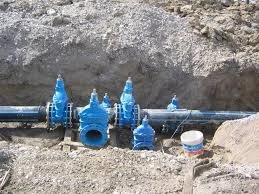Sht . 22, 2024 02:29 Back to list
hdpe sheet thickness
Understanding HDPE Sheet Thickness A Comprehensive Guide
High-Density Polyethylene (HDPE) sheets are widely utilized in various industries due to their remarkable durability, chemical resistance, and versatility. One of the critical factors to consider when selecting HDPE sheets for a specific application is the thickness of the material. The thickness of HDPE sheets can significantly impact their performance, cost, and suitability for different applications.
When discussing HDPE sheet thickness, it’s essential to understand that these sheets are available in a range of thicknesses, typically from 1/8 inch (approximately 3 mm) to several inches. The choice of thickness depends on the intended use, the stress it will endure, and the specific requirements of the project.
Applications of HDPE Sheets Based on Thickness
1. Thin Sheets (1/8 inch to 1/4 inch) These are often used in applications that require flexibility and ease of handling, such as signage, protective barriers, or temporary structures. Thin HDPE sheets are lightweight, making them easier to transport and install.
2. Medium Thickness Sheets (1/4 inch to 1/2 inch) These sheets strike a balance between durability and flexibility, making them suitable for a broader range of applications. They are commonly used in fabrication, industrial applications, and cases where moderate impact resistance and chemical resistance are needed.
3. Thick Sheets (1/2 inch and above) Thick HDPE sheets are essential for applications requiring substantial strength and load-bearing capabilities. Industries such as construction, marine, and heavy equipment rely on thick HDPE sheets for skid plates, truck liners, and structural components due to their ability to withstand heavy loads and harsh environments.
hdpe sheet thickness

Factors to Consider When Choosing HDPE Sheet Thickness
- Load Requirements Assess the load-bearing requirements of your project. Heavier loads will necessitate thicker sheets to ensure structural integrity and performance.
- Environmental Conditions Consider exposure to chemicals, weather exposure, and other environmental factors that may affect the material. Thicker sheets often provide better resistance against environmental stress.
- Cost Implications Thicker HDPE sheets typically come at a higher cost. It's crucial to balance budget constraints with performance needs when selecting the appropriate thickness.
- Machining and Fabrication The thickness of the sheet can affect the ease of machining and fabrication. Thinner sheets are generally easier to cut and shape, while thicker sheets may require specialized tools and techniques.
Conclusion
In conclusion, understanding HDPE sheet thickness is fundamental for selecting the right material for your project. Whether you need thin, medium, or thick sheets, each offers distinct advantages for specific applications. By considering your load requirements, environmental factors, cost implications, and fabrication needs, you can make informed decisions that will ensure the longevity and effectiveness of your HDPE product. With the right thickness, HDPE sheets can provide excellent performance and durability across a diverse range of applications.
-
Durable PP Rigid Sheet: Lightweight, Chemical Resistant Solutions
NewsAug.21,2025
-
PVC Grey Sheet for Extraction: Chemical Resistant & Durable
NewsAug.19,2025
-
Durable PVC Pipe Fittings for Plumbing & Irrigation Needs
NewsAug.18,2025
-
HDPE Steel Belt Reinforced Spiral Corrugated Pipe | High Strength
NewsAug.17,2025
-
HDPE Pipe Fittings: Durable, Leak-Proof Solutions
NewsAug.16,2025
-
Premium CPVC Sheet: High-Temp & Chemical Resistant Solutions
NewsAug.15,2025

